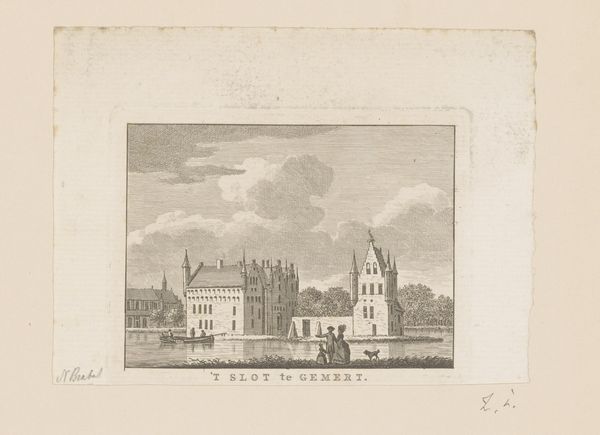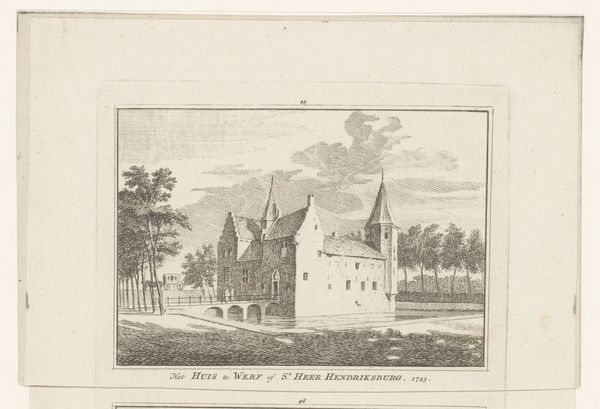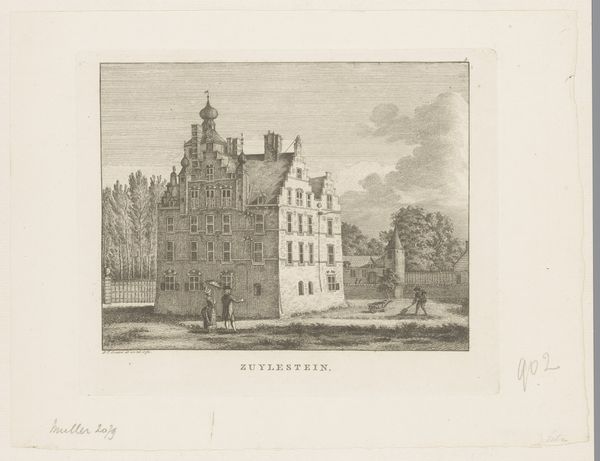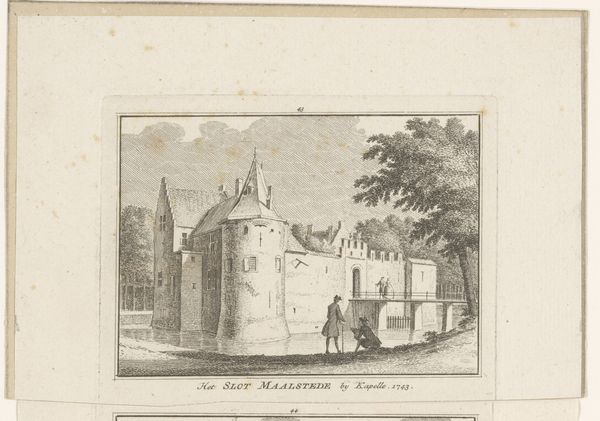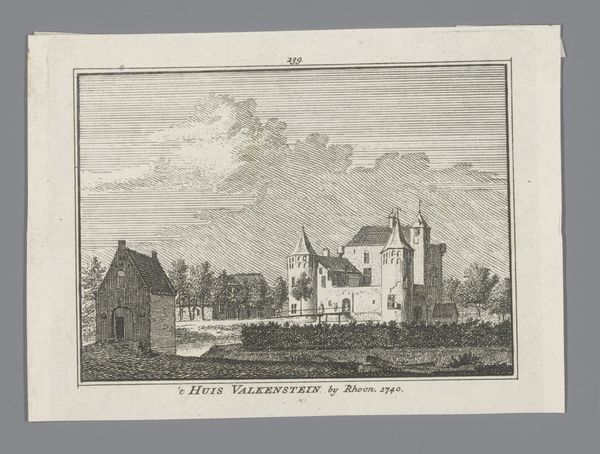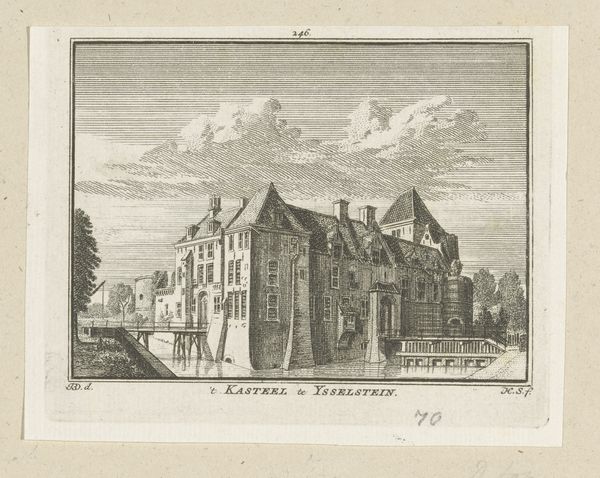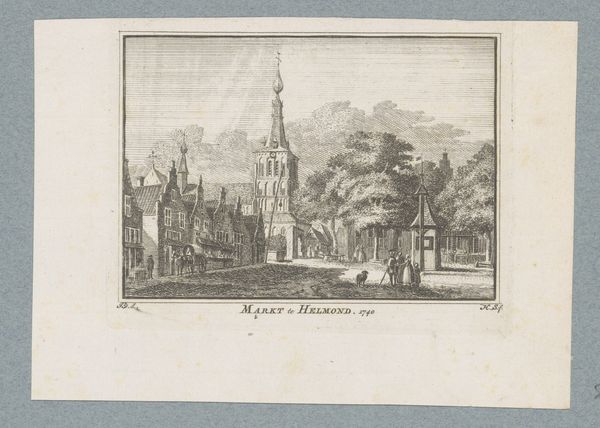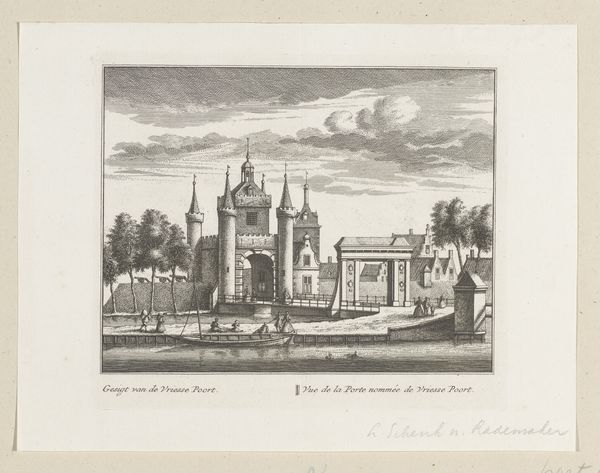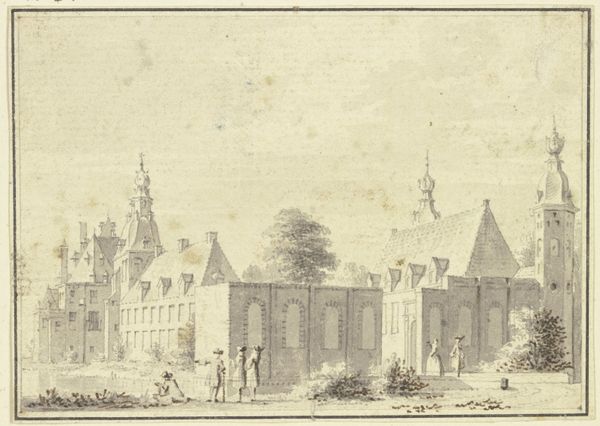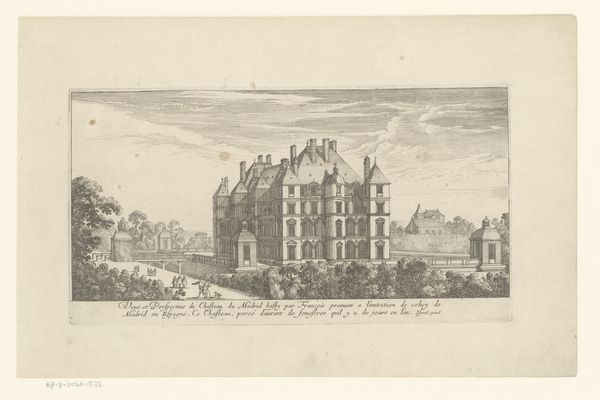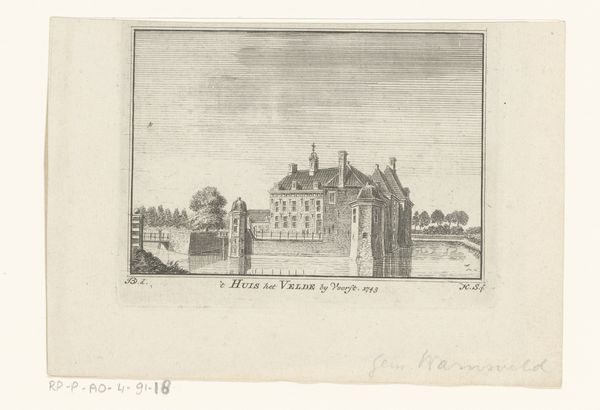
Dimensions: height 80 mm, width 109 mm
Copyright: Rijks Museum: Open Domain
Editor: Here we have "Gezicht op Slot Moermond, 1743" by Hendrik Spilman, likely created between 1754 and 1792. It’s an engraving. The precision in the architectural details is impressive, and the balance of light and shadow gives the image a real sense of depth. What stands out to you in terms of its formal qualities? Curator: The meticulous rendering of architectural elements immediately arrests the eye. Observe how Spilman orchestrates linear perspective. The lines converge with unwavering accuracy, drawing the gaze deep into the pictorial space. The interplay between light and shadow is equally calculated, defining the volumetric presence of the castle while also enriching the surface with subtle gradations. Do you notice the directionality inherent within the engraved lines themselves? Editor: I do see that now. The lines in the sky are very different from those that define the architecture. How does the technique itself contribute to our understanding? Curator: The very act of engraving demands precision. This medium imposes a disciplined hand and eye. Each stroke contributes to a cohesive whole. The overall effect mirrors the rationalist aesthetic ideals which privileged order, clarity, and measured composition. How might the stark contrast between the constructed environment and the natural elements inform your analysis? Editor: That's fascinating. I hadn't considered the way the controlled lines speak to broader philosophical ideas about order. Looking at the relationship between the geometric forms of the building and the softer lines of the landscape… It creates a really compelling tension. I see so much more in this work now. Thanks for your insight. Curator: Indeed. Such disciplined formalism invites us to engage with the very essence of visual order.
Comments
No comments
Be the first to comment and join the conversation on the ultimate creative platform.
